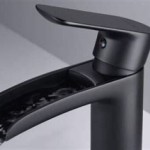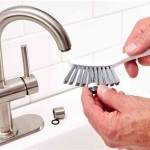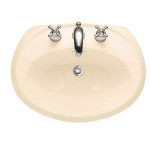Leak Under Bathroom Sink Valve Replacement
A leak under the bathroom sink is a common plumbing problem that can quickly escalate into a major headache. The source of the leak is often the valve that controls the water supply to the sink faucet. Over time, these valves can wear out, corrode, or become damaged, leading to drips, slow leaks, or even a sudden burst of water. While a minor leak might seem insignificant, it can cause water damage to your cabinets, flooring, and walls, leading to costly repairs. Fortunately, replacing the valve under the bathroom sink is a relatively straightforward DIY project that even novice homeowners can tackle with the right tools and knowledge.
Before embarking on this project, it's essential to shut off the main water supply to your house. This step is crucial to prevent flooding while working on the valve. Once the water is off, drain the remaining water from the pipes by turning on the bathroom sink faucet and allowing it to run until all the water is drained. Subsequently, inspect the valve for any visible signs of damage or corrosion. A leaky valve might exhibit signs of rust, discoloration, or cracks. If the valve appears to be in good condition, the leak may be originating from the faucet itself, requiring a separate repair.
Identifying the Type of Valve
The first step in replacing the valve under your bathroom sink is to accurately identify the type of valve you have. There are two primary types of valves commonly used in bathroom sink plumbing: compression valves and ball valves. Compression valves are older and typically feature a threaded stem with a rubber washer that seals against the pipe. Ball valves, on the other hand, are more modern and utilize a ball-shaped mechanism with a hole that opens and closes the water flow. Identifying the specific valve type is crucial as it determines the appropriate replacement valve and the necessary tools for installation.
Tools and Materials for Valve Replacement
Once you've determined the type of valve you need to replace, gather the necessary tools and materials. These typically include:
*- Adjustable wrench
- Channel-lock pliers
- Pipe wrench
- Teflon tape
- New valve (compatible with the existing pipe size and type)
- Optional: Valve handle and escutcheon (if replacing the entire assembly)
- Bucket or container to catch any remaining water
- Safety glasses and gloves
Step-by-Step Guide to Replace the Bathroom Sink Valve
Replacing a bathroom sink valve is a relatively simple process. Here's a step-by-step guide to help you through the process:
- Shut off the water supply: Turn off the main water supply valve to your house to prevent flooding. This is usually located near the water meter.
- Drain the pipes: Open the bathroom sink faucet and allow the water to drain until all the water is out of the pipes. If the water is still flowing, you may need to open a nearby faucet to ensure complete drainage.
- Disconnect the old valve: Using the appropriate wrench, loosen the nut connecting the valve to the pipe. Apply pressure in a counter-clockwise direction. If the nut is rusted or stuck, you might need to apply penetrating oil and let it sit for a while before attempting to loosen it again.
- Remove the old valve: Once the nut is out, the old valve can be removed from the pipe. Be careful not to damage the pipe while removing the valve.
- Prepare the new valve: Wrap the threads of the new valve with Teflon tape in a clockwise direction. This helps to create a seal and prevent leaks.
- Install the new valve: Screw the new valve onto the pipe by turning the nut in a clockwise direction. Ensure the valve is properly secured and does not leak.
- Connect the supply line: Reattach the supply line to the new valve. Be careful not to overtighten, as this could damage the valve or the supply line.
- Turn the water back on: Slowly turn the main water supply valve back on. Check for any leaks around the new valve and the supply lines. If you notice any leaks, tighten the connections or re-wrap the threads with Teflon tape.
Troubleshooting and Maintenance
If you experience leaks after replacing the valve, double-check that the connections are tight and that the Teflon tape is properly applied. If the problem persists, you may need to inspect the faucet itself for leaks or consider hiring a professional plumber to diagnose the issue. Regular maintenance can help prevent future valve failures. Periodically check the valve for signs of corrosion or wear. If you notice any issues, it's best to replace the valve before it causes a major leak.

How To Replace A Leaking Shutoff Valve Under Sink

How To Fix A Leaking Water Supply Shut Off Valve Easy Diy For Beginners

Few Know This Easy Trick To Stop Leaking Valves Instantly

Bathroom Sink Drain Leaking Around Threads Premier Plumbing Inc

Bathroom Faucet Is Leaking Or Dripping

Water Shut Off Valve Leak Repair For Sink Leaks Or Toilet

How To Fix Pipework A Tap Faucet Leaking Under The Sink

How To Fix A Leaking Bathroom Sink Paschal Air Plumbing Electric

Hose Under Your Sink Is Leaking Here S What You Have To Do

Fix Leaking Shut Off Valve Tighten Ng Nut
Related Posts







